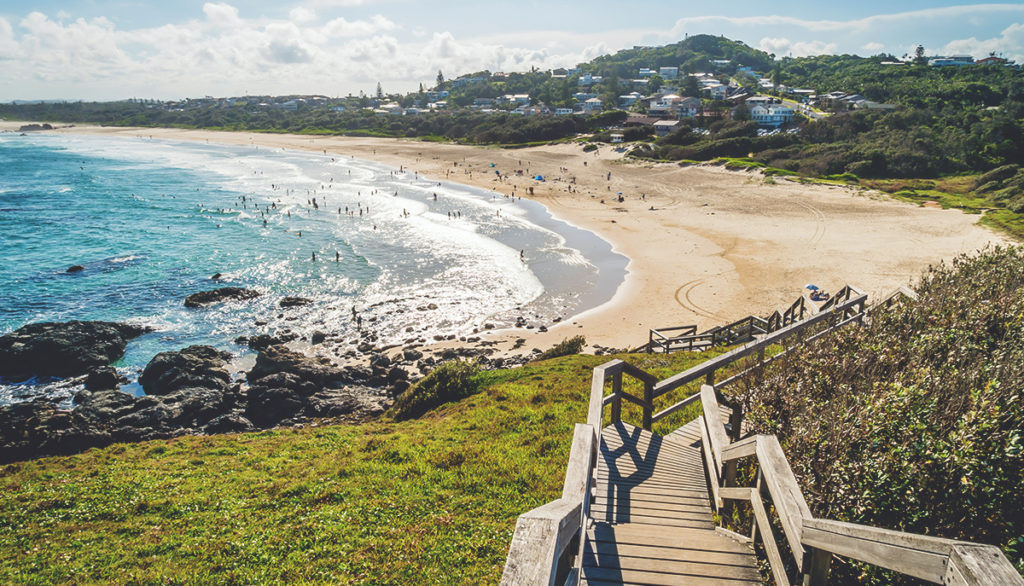While many students opt to study in Australia’s biggest cities, living in regional Australia has so much to offer. When you live and work in regional Australia, you not only help boost local economies and minimise pressure on major cities, but you also open yourself up to a fascinating experience.
If you’d like to learn more about what it’s like to study in a regional area, regional visas for Australia and the best regional areas for jobs, we’ve put together a handy guide.
What is a designated regional area?
The majority of locations outside of Sydney, Melbourne and Brisbane are considered designated regional areas in Australia for migration purposes.
The regional area definition has three categories, but only two of these offer incentives for international students to continue living, working and studying in regional Australia.
- Category 2 includes the ‘Cities and Major Regional Centres’ of Perth, Adelaide, the Gold Coast, the Sunshine Coast, Canberra, Newcastle and Lake Macquarie, Wollongong and Illawarra, Geelong and Hobart.
- Category 3 includes ‘Regional Centres and Other Regional Areas’ and refers to anywhere outside of the areas listed above.
Given how much of Australia is considered regional, it’s no surprise that these destinations house many of the country’s best universities. For example, Charles Sturt University has campuses across New South Wales, including in regional areas like Bathurst, Orange and Wagga Wagga. With high-quality facilities and high-standard teaching, these campuses are proof that international students can gain a world-class education in regional Australia.
Why study in a regional area?
Education providers located in regional Australia give you the opportunity to explore the ‘real Australia’ outside of the big capital cities. Other benefits include a quieter lifestyle, a smaller, more intimate university experience, beautiful natural landscapes to explore and additional opportunities for migration (which we discuss more below).
International students studying in regional Australia also have access to a wide range of student support and safety services. This can range from health and welfare, learning support and employability advice, to exclusive scholarships only available to students in regional areas.
As an international student studying a bachelor’s degree or higher in a Category 2 regional area, you’re entitled to several migration perks, including:
- Priority processing of your regional visa
- Access to the Regional Occupations List (which has more jobs to choose from compared to non-regional lists)
- An additional year in Australia on a Temporary Graduate visa (subclass 485) once you graduate.
If you’re in a Category 3 regional area, you’ll enjoy all of these benefits as well as access to 11,200 dedicated regional migration places and priority in negotiating region-specific Designated Area Migration Agreements (DAMA).
A DAMA is an agreement between the Australian Government and a regional authority. It offers regional employers more overseas workers than the standard skilled migration program. DAMAs provide flexibility for regions to respond to their unique economic and labour market conditions, which in turn means more job opportunities in regional areas for international graduates.
What happens when I graduate?
When you graduate from a regional university, there are several regional visas for Australia to consider.
The Temporary Graduate visa (subclass 485) – which has a Graduate Work stream and a Post-Study Work stream – allows international students to remain in Australia for up to 4 years (5 years for students from Hong Kong). Students who graduate from regional universities can stay in Australia on a second Temporary Graduate visa (subclass 485), as long as their first Temporary Graduate visa was in the Post-Study Work stream. This is a great option for students who wish to extend their stay and work towards achieving permanent residency. We’ll also explore a range of other permanent residency pathways in the following sections.
Other visas you can apply for include the Working Holiday visa (subclass 417 or 462) which allows people between 18 and 30 years old (or 35 years old for some countries) to work in Australia for up to 12 months. You also have the option to apply for another Student visa (subclass 500) to continue your studies. If you’re keen to travel instead of work or study, you can apply for a Visitor visa.
Visa conditions are subject to change, so make sure you keep up to date via the Department of Home Affairs website.
Are there regional migration incentives?
In November 2019, the Australian Government announced changes to the immigration program to strengthen the economy and boost regional areas.
Australia’s regional migration program includes:
- Skilled Regional (Provisional) visas that provide a pathway to permanent residency
- The Permanent Residence (Skilled Regional) visa (from November 2022)
- Additional points under the Skilled Migration Points Test for skilled migrants who want to live and work in regional areas
- A bigger range of options for international students who graduate from regional universities.
Are there regional skilled visas if I want to work in Australia after graduating?
There are currently three regional skilled visas available to skilled migrants, including international graduates, who want to live and work in regional Australia:
- Skilled Work Regional (Provisional) visa (subclass 491) – For people nominated by a state or territory government or sponsored by an eligible family member to live and work in regional Australia.
- Skilled Employer Sponsored Regional (Provisional) visa (subclass 494) – For people sponsored by an employer in regional Australia.
- Permanent Residence (Skilled Regional) visa (subclass 191) from November 2022 – To be eligible for permanent residency, holders of the new skilled regional provisional visas will need to show they have lived and worked in regional Australia while holding a previous eligible visa.
Where can I find visa support?
Your education provider may be able to provide general information to help you with the visa process. Most universities have dedicated international student services, which offer a comprehensive guide to everything you need to prepare ahead of your move to Australia, as well as information on the visa system and where to find a Migration Agents Registration Authority (MARA)-registered immigration agent should you need one. You can also find student visa information and regional migration visa details on the Australian Department of Home Affairs website.
Make sure to only take visa advice from a registered agent or the Department of Home Affairs to avoid scams and ensure your visa information is safe, current and accurate.
Image courtesy of Destination NSW.
Named the #1 university for graduate employment, Charles Sturt University is the ideal place to begin your study journey in regional Australia. With campuses in some of New South Wales’ fastest-growing regional cities, you’ll benefit from a unique study experience with access to the best of city and regional living.
Charles Sturt University is an Australian University, TEQSA Provider Identification: PRV12018. Charles Sturt University CRICOS Provider Number: 00005F






